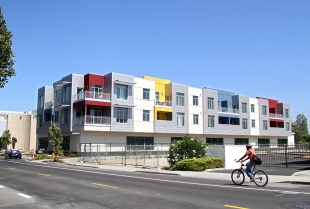On September 10th, the Palo Alto City Council approved a review of its existing renters’ protection ordinance. The proposal was introduced by four councilmembers in the wake of the planned conversion of the President Hotel Apartments into a luxury boutique hotel, which threatens to displace the remaining 60 residents of the 75-unit building.
The colleagues’ memo proposing the policy review was crafted narrowly to look at issues such as enforcement of existing requirements that tenants be offered a one-year lease and extension of tenant relocation assistance to buildings with five or more units from the current level of 50 units. While the original proposal did not include review of rent caps or eviction protections, it did call for a detailed assessment of policies in neighboring cities and reevaluation of Palo Alto’s existing ordinances.
This discussion came just under a year after the City Council had an acrimonious debate about adopting limits on allowable rent increases and protection from evictions without cause. Last October’s debate ended in the Council rejecting the proposal for broader tenant protections.
Monday’s discussion was similarly heated, as a number of council members argued once again that the “full range” of renters’ protections should be explored. This effort to expand the scope of the review led to accusations on both sides of the issue about how the Council can proceed in good faith to best protect the interests of renters in the City. The discussion on the dais reflected the preceding public comments, which included many local tenants asking for greater protections and many local landlords arguing that strict regulations will have unintended consequences for the local housing market.
The issue of how best to protect tenant communities from rising rents and the lack of affordable housing alternatives is one that confronts many cities in Santa Clara County. While some have adopted stronger protections for existing renters, others have sought to strengthen relocation benefits and explore other approaches to preserving communities. What is clear is that it is going to take serious discussion and creative policy making to respond to the current threats of displacement many cities face.
No date was set for staff and the subcommittee charged with the policy review to report back to the Council with recommendations. SV@Home continues to monitor this issue.
